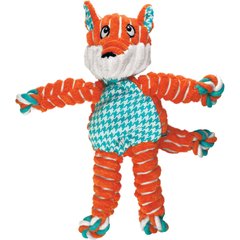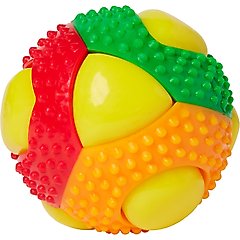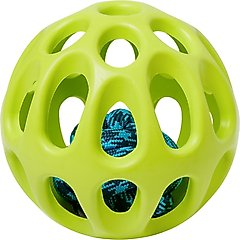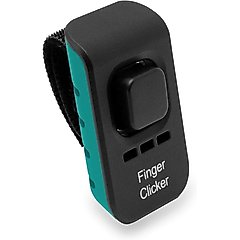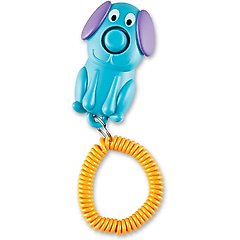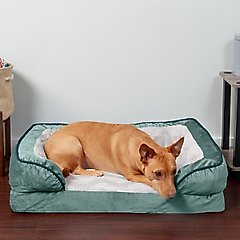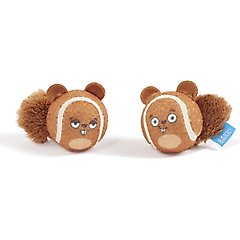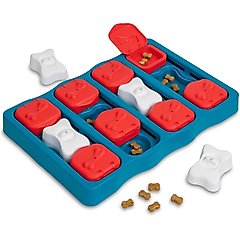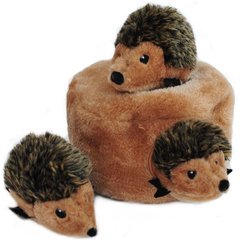Does My Dog Love Me? 7 Signs That Your Pup’s a Fan
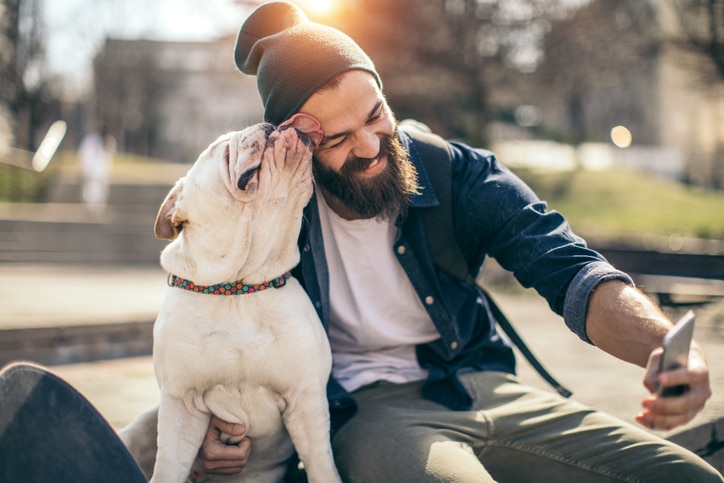
Photo by supersizer/E+
A wagging tail, a lick on the face, and an enthusiastic greeting at the door all seem like sure signs your dog adores you. But even with all that affection, you may still find yourself wondering: Does my dog love me?
We talked to two experts to find out what your dog’s behavior really means and how to tell if it’s love.
Key Takeaways
- Dogs don’t experience love the same way humans do, but it’s likely they love us in their own canine way.
- Dogs get a surge of oxytocin, also known as the love hormone, when they bond with someone they “love.”
- If your dog sleeps in your bed, wags their tail a lot, or tends to follow you around, it’s likely they enjoy your company.
- You can show your dog you love them by playing together, offering a reliable routine, and giving lots of positive encouragement.
Do Dogs Feel Love?
On a basic level, dogs do feel love. According to Vanessa Spano, DVM, DACVB, senior veterinarian behaviorist at the Schwarzman Animal Medical Center in New York City, the neurobiology of “love” involves the hormones oxytocin, dopamine, serotonin, and norepinephrine.
Dogs have these hormones, which play a powerful role in shaping emotional experiences.
Oxytocin, which is often called the “love hormone,” is released during bonding moments, like when your dog cuddles with you. When it’s released, it helps strengthen attachment and makes your pup feel safe and connected.
Dopamine is associated with pleasure and reward, and it reinforces your dog’s positive feelings when they’re interacting with you.
Serotonin helps regulate mood and contributes to feelings of well-being, while norepinephrine is tied to excitement, like when you come home after being gone all day.
So, can dogs feel love the same way we do? Not exactly, but they do experience emotional bonds through the same hormones that drive human connection.
Does My Dog Love Me?
The short answer is yes, your dog probably loves you—but in their own uniquely canine way. It’s not the same love that people experience, but dogs still form deep emotional bonds with their humans, according to Sarah Cortright, DVM.
In one study using MRI scans, researchers found that the part of the brain linked to positive emotions lit up most when dogs smelled their owner’s scent, more than any other smell they were exposed to. This strongly suggests that dogs feel something very real in our presence, such as comfort, trust, and joy, she says.
So, while your pup may not “love” you in the human sense, chances are they’re incredibly fond of you and feel safe, happy, and connected when you’re around.
How To Tell If Your Dog Loves You
Our experts say there are some behaviors that suggest your pup’s a fan.
They Wag Their Tail a Lot
Dogs communicate through body language. Tail wagging, especially with a loose, wiggly body and hind end, is a good sign that your dog is happy to see you and looking for affection, says Dr. Spano. It’s a classic cue that your dog enjoys your company.
They Follow You Around
When your dog “shadows” you—that is, follows you around—it means your presence is comforting and reassuring. Dogs who love their humans tend to stay close, whether you’re doing laundry or cooking in the kitchen. It’s their way of staying connected and involved in your life.
They Sleep in Your Bed or Near You
Dogs tend to sleep where they feel most secure, so choosing to sleep by your side is a sign of trust and attachment, says Dr. Cortright. This shows a deep level of emotional closeness.
They Give You ‘Kisses’
Many dogs use licking, or giving “kisses,” to bond with their favorite people. If your dog gives you gentle licks, it’s likely their version of saying “I love you.”
They Make Eye Contact
When a dog holds eye contact, it’s a big sign of trust, says Dr. Cortright. Research also shows that mutual eye contact between dogs and humans can increase oxytocin—the same “love hormone” that helps human parents bond with their babies.
They Bring You Toys
Sharing prized possessions is a sign of social bonding in dogs and often reflects their desire to spend quality time with you. When a dog drops a toy at your feet or brings you their ball, they’re inviting you to interact and including you in their world.
Recommended Products
They Mirror Your Emotions
Dogs are incredibly in tune with your moods and emotions. Because of this, emotional contagion—the tendency to reflect the feelings or behaviors of someone you’re close to—can also show up in dogs. For example, if they yawn when you yawn, it can be a sign that you’re emotionally connected.
How To Show Your Dog You Love Them
Now that you know how to tell if your dog loves you, you may be wondering: Does my dog know I love them?
It’s natural to want to shower your pup with hugs and kisses to say “I love you,” but dogs don’t always interpret these human gestures the way we intend—and some may not enjoy them at all.
Fortunately, there are plenty of ways to show your dog you love them in a way they understand, says Dr. Cortright.
Spend Quality Time Together
Walks, training, or just relaxing together can strengthen your bond.
Recommended Products
Rely on Positive Reinforcement
Using dog treats and praise not only builds trust, but it also fosters a more secure relationship, the same way you feel close to people who support and encourage you.
Recommended Products
Show Physical Affection
Gentle petting, especially in spots they like (like the chest or behind the ears), can release oxytocin and create a calming effect.
Give Them a Reliable Routine
Dogs feel safest when their basic needs (nutritious dog food, exercise, a comfortable dog bed, and vet visits) are met consistently. Structure helps them relax and feel secure.
Recommended Products
Play With Them Often
Interactive games and throwing a ball reinforce social connection and communication.
Recommended Products
Dr. Spano says that, just like humans, dogs have their own love languages, so pay attention to your dog’s body language during social interactions. Tense muscles, a tucked or very stiff tail, ears back, lip licking, and yawning are signs that they’re anxious or apprehensive.
Dogs are sentient creatures, so they should be afforded the same respect of consent that we give to fellow humans, says Dr. Spano. If your dog is showing any signs of discomfort, find a different way to show affection.
FAQs About How Dogs Love
Q: Can a dog be too attached to their person?
A: Yes, says Dr. Spano. It’s called hyperattachment, and it often stems from genetics or inconsistent attachment figures early in life. It can lead to separation anxiety or protective aggression, where the dog feels compelled to “guard” their person. You can work on these behaviors with a certified trainer or behaviorist who practices positive reinforcement.
Q: Can a dog bond with two pet parents?
A: Yes, dogs can form strong emotional attachments with two pet parents (and multiple other people too). Each bond might look a little different, but dogs are social animals and can love and trust more than one human deeply, says Dr. Cortright.
Q: Do dogs have a favorite person?
A: Yes, dogs have a favorite person. Dr. Cortright says dogs often attach most strongly to the person who feeds them, trains them, or simply spends the most time with them.
